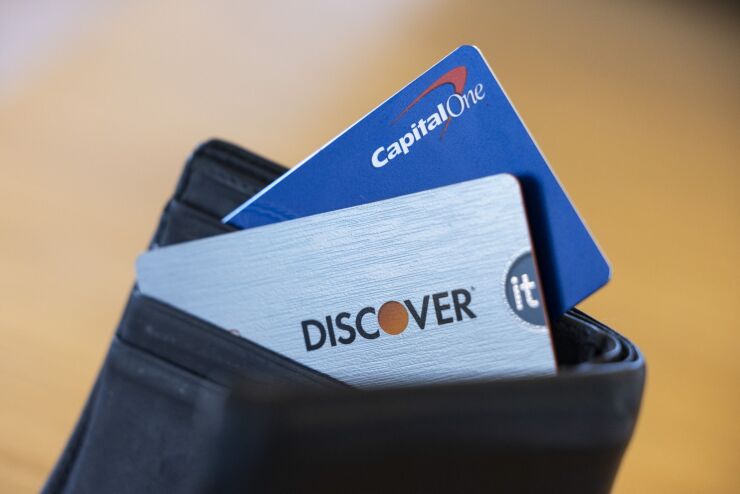
The past four years have been heady times for those pursuing a more aggressive antitrust-enforcement regime. Critics of the Biden administration's competition policy have charged that
A prime test for the administration is Capital One's
Critics contend that the deal will be anticompetitive because the combined firm would hold roughly one-fifth of U.S. credit card debt. But there are thousands of card-issuing banks in the United States and the combined company's post-merger market share of 22% is far below the threshold inviting close scrutiny under federal bank-merger guidelines or the antitrust agencies' own merger guidelines.
Moreover, while the post-merger bank would rank sixth largest in terms of assets, it would hold just 3% of all domestic assets and would be dwarfed by industry behemoths such as JPMorgan Chase, Citibank and Bank of America. Even by crude "big is bad" standards, the merger presents no serious threat of competitive harm.
In contrast to these speculative claims of harm, the merger holds potentially huge benefits for consumers and the economy. While critics have focused on unfounded claims of reduced competition in the payment card issuance space, they ignore the more profound ways the merger will increase competition in the payment card network space. Discover — which emerged in 1986 as a successor to the widely held Sears credit card (a popular means for shopping through the Sears catalog) — pioneered such innovations as cashback rewards. But for two decades, its share of credit card volume has been stagnant, at about 4%.
Combining Capital One's substantial cardholder base and innovative culture with Discover's existing (but stagnant) network promises to invigorate the new company as a rivalrous network competitor to Visa, MasterCard and American Express. Ironically, many of the same political voices coming out against the merger also have proposed ill-conceived legislation designed to force an artificial structure of network competition on the industry. This merger effectively addresses that concern.
Capital One's proposed deal to acquire Discover is being viewed by progressives as a test of how skeptical the administration really is about big bank mergers, while Republican lawmakers mostly support the deal.
The combination also promises additional benefits to consumers, such as increasingly personalized product offerings. In addition, the expected movement of traffic from the Visa and MasterCard networks to the Discover network will decrease costs, increase revenues and amplify the information flows necessary to build better consumer data and use profiles.
Moreover, like American Express, Discover is a "three-party" payments network (it is the issuer, acquirer and network processor of its cards), whereas Visa and Mastercard are "four-party" networks (Visa or Mastercard-branded cards issued by one bank, such as Citi, can be acquired by another bank, such as Chase, and the network processes those transactions). As a result, the new entity will be protected from federal price controls and rules that apply only to four-party networks.
Implementation of those rules has been particularly burdensome on lower- and middle-income consumers who, among other things, have lost access to free checking accounts and while seeing monthly fees soar. When combined with Discover and Capital One's low-cost operating structure — Discover, for example, has no expensive branches to operate — these features can help preserve and expand financial access and offer more competitive options to consumers.
Evaluating the competitive effects of mergers in the retail-banking sector is complicated because of the bundled nature of the products. Small theoretical reductions in one narrowly defined horizontal market (such as subprime credit card issuance) might be swamped by significant increases in competition in other vertical markets (such as the payment card network market) or increases in product quality that come from scale (such as improved data security).
The overall size of the combined entity is still trivial compared to industry behemoths. On net, it is evident the benefits to consumers from the Capital One-Discover merger dramatically exceed the speculated harms that caution against it.
An earlier version of this article incorrectly suggested that Discover had suffered recent consumer data breaches.






